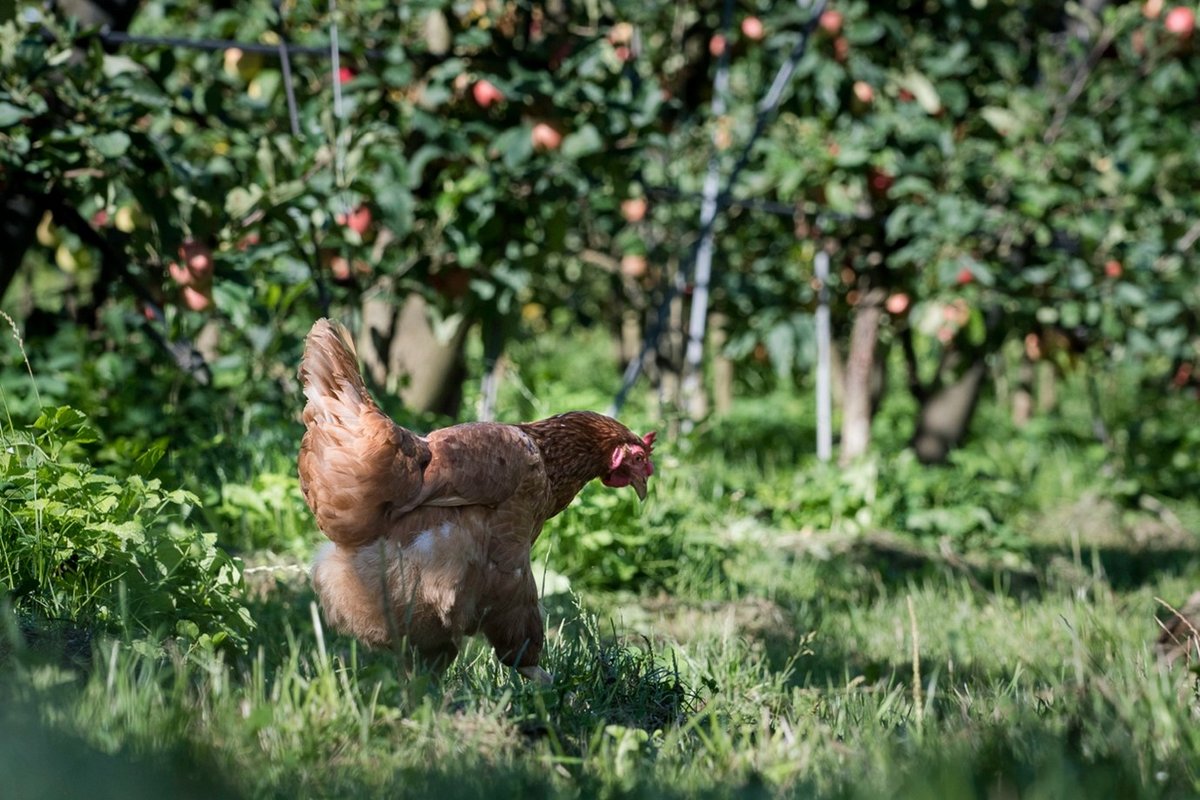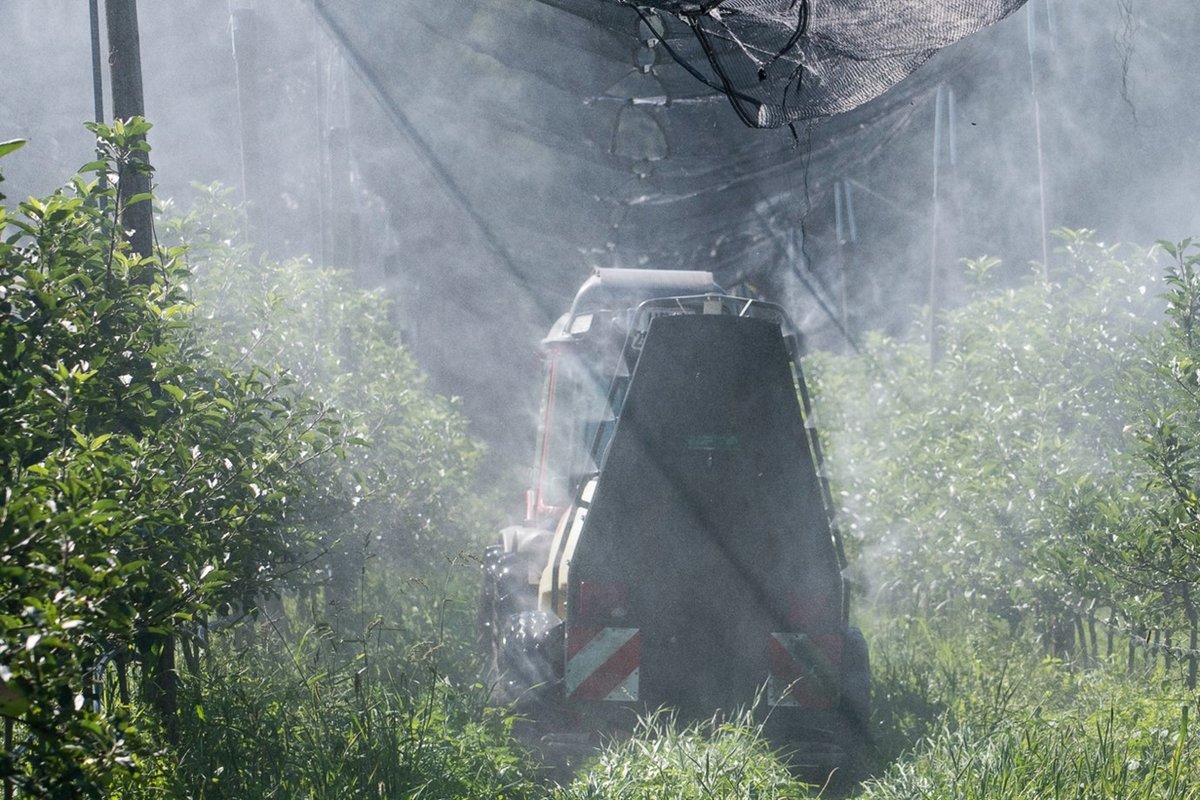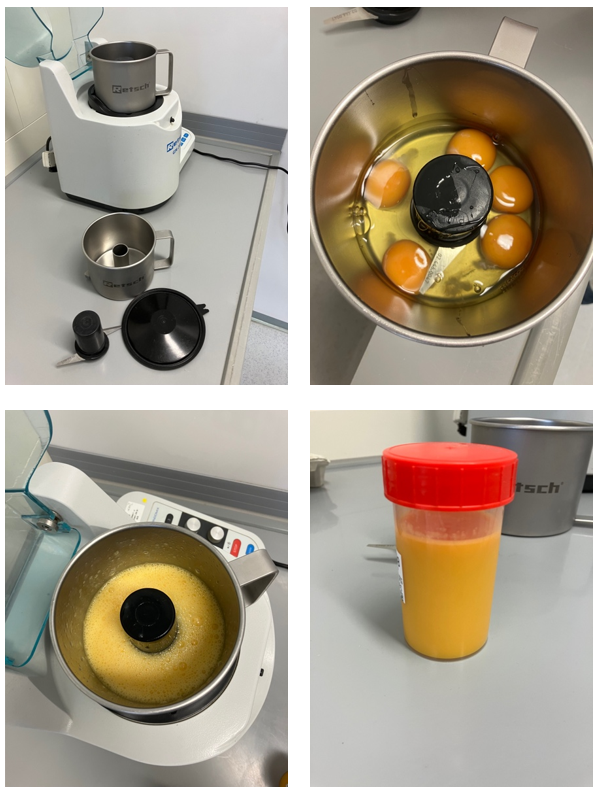Copper levels in eggs from laying hens "Apple Hens" in biodynamic apple orchards
A first view on potential copper residues in bio-dynamic eggs from laying hens kept in orchards shows that the consumption of Apple Hen eggs does not pose any risks to consumers.

Within the MIXED project, funded by EU Horizon2020 programme, mixed farming systems are explored. In Austria the University of Natural Resources and Life Sciences Vienna (BOKU) is supporting the development of the so called "Apple Hens" as part of the MIXED project.
Apple Hens are spent laying hens which are kept in organic fruit orchards for egg production. Learn more here
In organic and bio-dynamic fruit production, copper-containing plant protection products are an important means of combating fungal diseases of trees. Conventional fruit growers primarily use synthetic components to combat scab or other fungal diseases. Despite ongoing trials in organic fruit growing, the use of copper to control fungi is often considered to be without alternative (see Felgentreu et al. 2017). The problem is that copper as a heavy metal can accumulate in the environment and its application is a regularly disputed subject. It is therefore particularly important to assess the consequences and risks of application with regard to residues in the soil, fruit and, in our particular case, in the eggs of the laying hens kept in the orchards.
Apple Hens - a good example of a successful mixed farming system
In principle, permanent crops such as fruit or wine are rarely combined with animal husbandry due to the high degree of specialisation of farms. The ecological approach of a mixed system and the implementation of circular economy concepts has been displaced in the course of specialisation. The green areas under the fruit trees are therefore usually no longer utilised, but nevertheless provide an excellent source of food for selected farm animals, e.g. poultry. The farmers use spent laying hens from organic egg producers and allow them to subsequently spend a second (and further) production cycle in their orchards as so called “Apple Hens” . The needs of these hens can be well met in the extensive husbandry system. In the spring and summer months in particular, the hens wander through the entire orchard, which covers several hectares, and scavenge for plant materials of high nutritive value, for insects and other potential feed materials that are freely available in the orchard.
Copper-containing plant protection agents to combat fungi
In accordance with the EU Organic Regulation and the guidelines of the Demeter Association, copper-containing plant protection products are also used in the bio-dynamic orchards to control fungi. However, the quantity of copper applied is very low, i.e. 1 kg copper/ha/year, applied in several application cycles with only 50g copper/ha per application.
However, as copper is stored in the soil over the long term, the hens could ingest copper by pecking at the soil or by feeding on the green vegetation underneath the apple trees. Information is lacking in the scientific literature on the potential contamination of eggs with copper applied at such low levels. It is therefore necessary to clarify whether the application of copper-containing plant protection formulations has an effect on the copper content in the eggs.

Sampling of Apple Hen eggs and copper analysis
For an initial assessment, 15 eggs each were collected for copper analysis in August 2022 from two Apple Hen farms (farm 2 and farm 4) in Styria 1-5 days after a copper application; in addition, commercially available organic eggs from the supermarket were obtained as a control. Copper application starts on the farms in spring and is carried out until late summer.
In the period from May to July 2023, extended sampling was then carried out on three farms (farms 1, 2 and 3. It was not possible to take samples from farm 4 for organisational reasons): After application of the copper-containing plant protection formulation, 5 eggs/farm were collected on each of three consecutive days. Therefore, 15 eggs per farm were submitted for copper analysis on each date. In addition, commercially available organic eggs were purchased from the supermarket on each date and were also analysed.
The analysis was carried out by AGES (Austrian Agency for Health and Food Safety GmBH, Department of Elemental Analysis). The egg white and yolk were analysed after pressure digestion with nitric acid and subsequent measurement on the ICP-MS. For this purpose, a mixed sample of the eggs was prepared for each farm. The maximum permissible copper content in eggs is limited to 2 mg/kg egg by Regulation (EC) 149/2008.

Exciting results - how much copper is in the Appel Hen eggs?
Due to the different sampling, the results of the copper analysis in 2022 are presented separately. The small sample size does not allow a statistical evaluation; in purely numerical terms, the copper contents in the eggs of the Apple Hens from farm 2 and farm 4 do not differ from the eggs of the control group (Table 1).
Table 1: Results of the copper analysis of the August 2022 eggs
| Farm 2 | Farm 4 | Control | |
| Copper (Cu) in mg/100g egg | 0,049 | 0,052 | 0,050 |
In 2023, several random samples of Apple Hen eggs were taken for copper analysis, but here too the data is not sufficient for further statistical analysis. From a descriptive (numerical) point of view, the differences in the copper content in the eggs between the farms are small (Table 2). At sampling dates 1 and 2, the copper content in the eggs of the control group is numerically lower than in the Apple Hen eggs. This small difference is not recognisable at date 3.
As small amounts of copper (on average 1kg/ha) were regularly applied in the orchards due to the weather conditions in spring, this could possibly explain the slightly higher copper content in the apple grouse eggs on dates 1 and 2.
Table 2: Results of the copper analysis in 2023
| Farm 1 | Farm 2 | Farm 3 | Farm 4 | |
Date 1: Copper (Cu) in mg/100g egg | 0,072 | 0,068 | 0,068 | 0,061 |
Date 2: Copper (Cu) in mg/100g egg | 0,060 | 0,053 | 0,052 | 0,044 |
Date 3: Copper (Cu) in mg/100g egg | 0,066 | 0,064 | 0,055 | 0,062 |
| Mean | 0,066 | 0,062 | 0,058 | 0,055 |
Conclusion
Maximum residue levels of pesticide residues and plant protecting substances in or on foodstuffs of plant and animal origin are regulated by Regulation (EC) 149/2008. This first view on potential copper residues in bio-dynamic eggs from laying hens kept in orchards shows that the consumption of apple hen eggs does not pose any risks to consumers. The copper levels in both the apple hen eggs and the control group are by a factor of at least 3 well below the legal maximum residue level of 2 mg copper compounds/kg egg.
Literature:
Felgentreu, D., Herwig, N., Hommel, B. (2017): Copper levels in German fruit-growing regions and their effects on earthworms. Organic fruit growing 4.
Regulation (EC) 149(2008) of 29 January 2008
